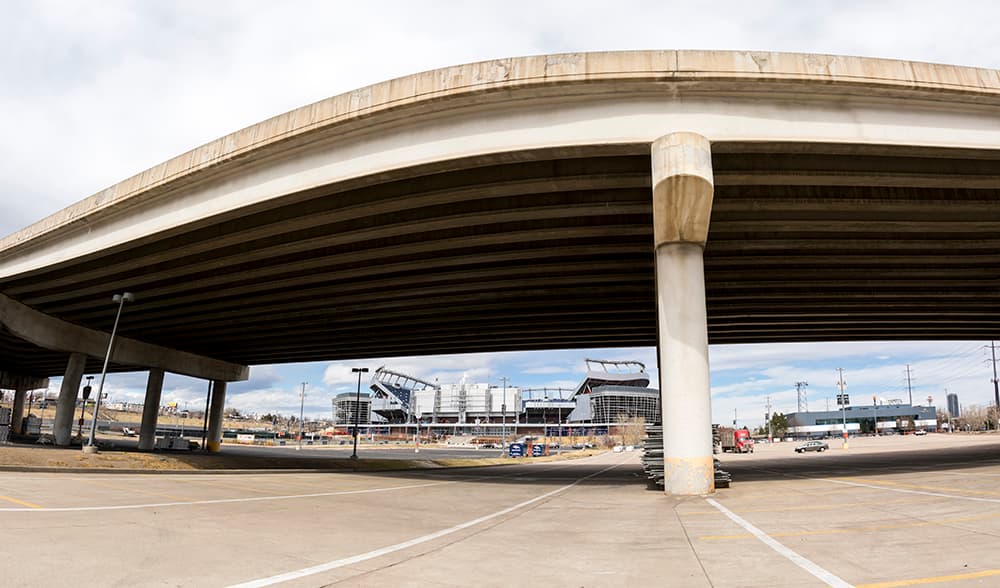
The Denver Broncos Football Club is working with the city of Denver to plan the future of 50-plus acres of surface parking lots around the stadium, which could eventually become a “mixed-use neighborhood destination” that would include dense residential development, they announced today.
It’s an idea that has percolated for more than a decade. Today, representatives of the team, the city government, and the district that runs the area made a formal announcement about the push to redevelop.
It begins this spring with a master planning process to be hosted by the city. If it proceeds, development could take up to a decade from now.
“It kind of feels like the starter fired the gun,” said Mac Freeman, chief commercial officer for the Broncos.

The team and the Metropolitan Football Stadium District hope to spur development on the stadium's southern parking lots, which contain about half of the stadium’s parking spaces.
The idea is to replace the lost parking with a large parking structure at the edge of the property, and then convert the lots into a higher-density entertainment and residential area. That's similar to the plan the city came up with in 2013.
“It really is game-changing for our city,” said city planning director Brad Buchanan.

The stadium is owned by taxpayers via the special district and leased to the Broncos. Similarly, the land to be developed would be leased from the district to developers.
The backers hope that developing the land would pull in roughly $5 million to $7 million per year in revenue, which would be funneled through the metro district and to the Broncos to handle mounting maintenance cost for the stadium itself, according to Matt Sugar, director of stadium affairs for the district.
“We look at this as an opportunity to secure the long-term future of the building,” Freeman said. The Broncos have a lease on the stadium through 2030. Some professional teams walk away from their facilities (which often are built at taxpayer expense) after 25-year leases.
The Broncos hope that revenue from the development could keep them in the current building until it's at least 40 years old, Freeman said. Sports Authority Field at Mile High was built in 2001; maintenance and capital needs could reportedly cost more than $500 million over the decades ahead.
With the new plan, the team also hopes to enliven the area and resolve the “pedestrian and auto conflict” that results from the rushes of cars and pedestrians before and after games.
“We love the idea of a phenomenally interesting pedestrian experience of discovery,” Freeman said.
The master planning process could take up to a year. The development could require zoning changes to be approved by the Denver City Council. It also would need a change to the Broncos' lease with the metro district, 9News reported. (The district is a governmental body that's linked to seven metro counties.)
Construction could take seven to 10 years in multiple phases, officials said. Development of the parking lots could be coordinated by a nonprofit development group.
The idea of entertainment districts around stadiums is growing in popularity. The Los Angeles Rams plan to open a similar site in 2020, and the Rockies have entertainment plans, too.
Buchanan said that the city would watch for the impacts of new development on existing residents. The site is near Sun Valley, one of the poorest parts of Denver.
“Finding ways of developing without displacing is really critically important — in the right places and in the right ways,” he said.











